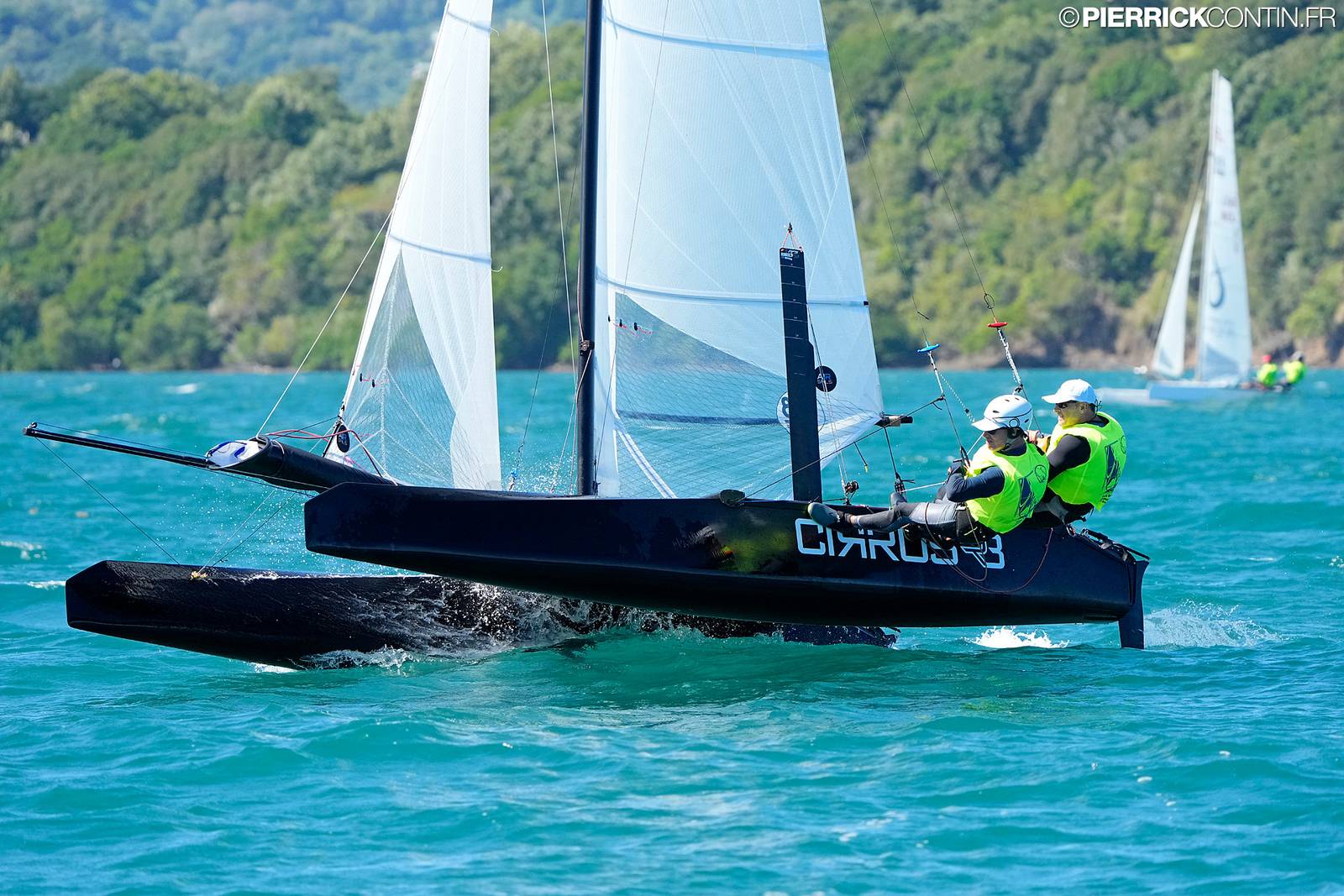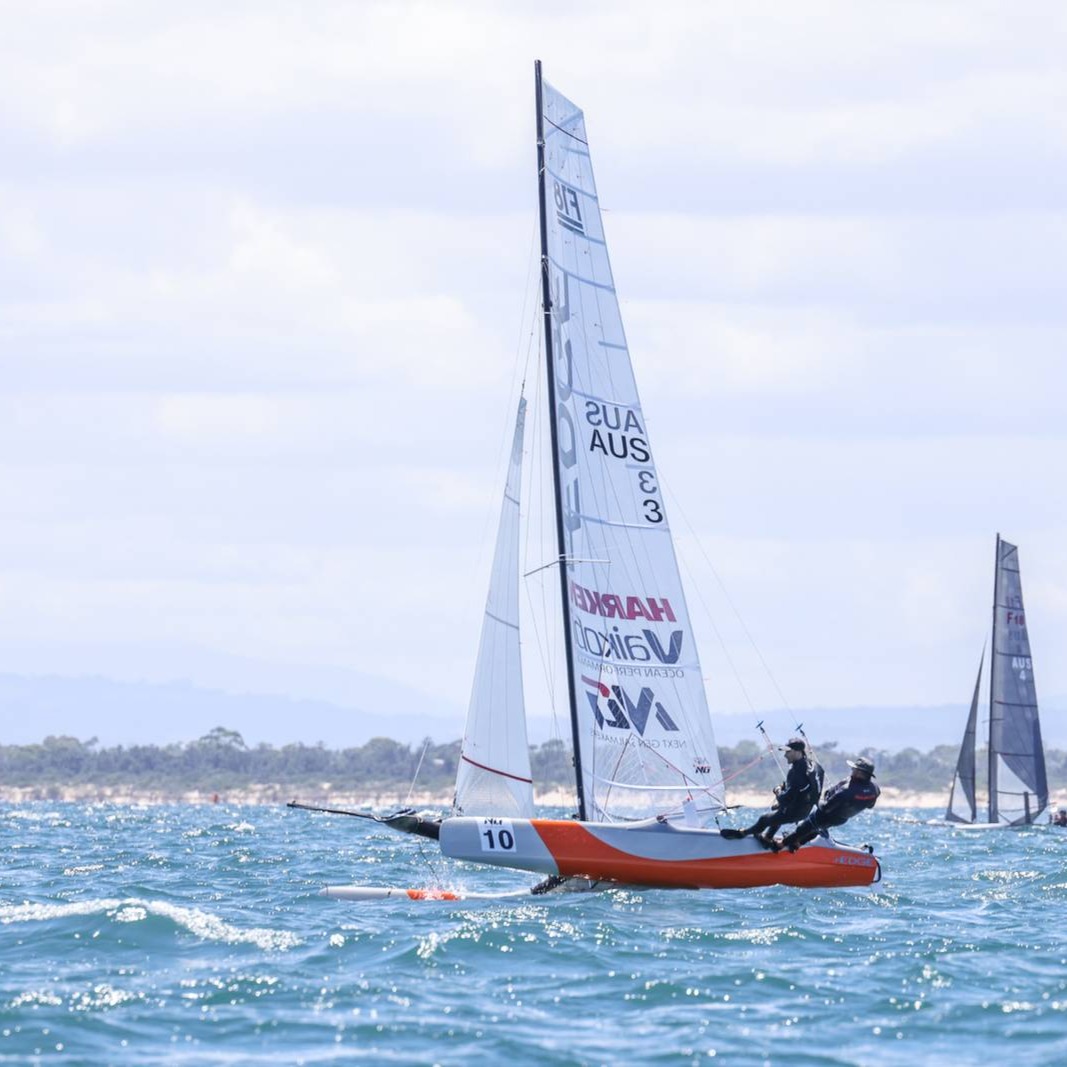F50s upgrades preview over AC50s
Above , the work in progress I did for the orig AC50 / Bermuda. Now the the Sail GP series/circuit will upgrade these weapons. Lets see what can they achieve, Coutts is talking over 50knots.
Whichever the case and the initial lack of confirmed teams (or info about them) , upgrading and developing further the AC50 will be more than interesting to follow, more if an innovator like Mike Drummond is involved. We’ll try to get more details on the F50 project in the future directly with him.
As per GP Sail claims:
“… These boats have been redesigned, re-engineered and rebuilt from the inside out.”
Wing re design, and foils? Latest trend have been T foils and flaps, wonder if they will stick to J/V designs.
The Alien AC75 might have some competition after all, lets see how this project evolves, as straight line speed seems to be an asset the AC75 will achieve, but early INEOS proto testing as noted looks so fragile in terms of stability for handling & maneuvers.
Below release published by Sail GP / sailgp.com on F50s planned upgrades.
——————————————
——————————————
Sail GP — Supercharged: Why the F50 is the perfect boat for SailGP
SailGP’s new F50 wingsailed catamaran will be an incredible high performance racing machine.
The F50 is predicted to break the 50 knot barrier as the most challenging, high-tech one-design racing boat ever produced.
At a glance, one could be forgiven for thinking it looks familiar to the AC50 used at the last America’s Cup in Bermuda. But in reality, there is a huge difference in performance between the two classes.
These boats have been redesigned, re-engineered and rebuilt from the inside out.
Supercharged
Take, for example, flight control. This is the command and control system so vital to maintaining stable flight to keep the boat sailing at pace. And here the F50 designers have really gone to work.
For the F50 both the foil and rudder pitch will be actively controlled. This should make the flight of the boat through the manoeuvres significantly more efficient.
The foils have been produced in higher modulus carbon fibre, producing a thinner section which has less resistance at high boat speeds. The geometry of the boards has been extended outside the maximum beam of the boat which provides more righting moment and a smoother transition between the vertical and horizontal sections of the foil. All of this translates into significantly higher ultimate boat speeds, where the onset of cavitation on the board occurs at a much higher speed as compared to a foil designed under the AC50 class rule.
Batteries have been brought in and are connected to a new hydraulic accumulator to power the foil and rudder pitch control, the jib sheet, and the wing twist control freeing up the two grinders to work on providing power to the wing sheet.
The flight of the boat can be controlled from the twist grips on the steering wheel or from a joystick controlled by the crew member sitting in position 3 (flight controller). The ride height of the boat can be adjusted independent of the fore and aft bow down pitch.
What seems like miles of hydraulic lines stitched inside the hulls and under the floorboards are used to distribute power to cant the boards to the most efficient angle and activate the rudder pitch control system.
The helmsman can control the ride height, the jib sheet, and the rudder differential from push buttons on the steering wheel. The helmsman can also adjust the speed at which those functions are adjusted by adjusting a dial in the centre of the steering wheel. Teamwork and communication will be key to achieving speed and efficiency.
Top speeds are expected to be 53 knots when the boat is reaching in 20 knots of wind speed. The onset of cavitation is predicted to occur at approximately 48 knots of boat speed – a process where high speed causes the water to bubble near the foil, reducing lift and ultimately limiting the ability to fly the boat efficiently once the cavitation becomes excessive.
With battery power on board the teams will have more freedom to tack or gybe more frequently. Skippers and tacticians won’t find themselves waiting for grinders to build power in the system before they can call for the next maneuver.
The F50s will sail with just five crew, the batteries freeing up one grinding position on board. This has led to a complete redesign of the cockpit layout.
Six F50s will be on the water for the first event in Sydney, Australia in February 2019. Three have been extensively modified using parts from parts of the previous AC50 models. Three sets of the F50s hulls are complete new builds. All of the work was done at Core Builders Composites in New Zealand.
F50 Blueprint
These boats will start life – and remain completely – one-design. But crucially, unlike nearly every previous one-design class, the F50 is an active development class. The shared design team will continuously research and implement innovations to ensure that the F50 class remains at the cutting edge. Where new components are introduced the will be applied equally across the fleet. The boats will be identical in every respect apart from the crew who sail them and the colors on the livery.
SailGP has employed veteran designer Mike Drummond to lead the design effort, and he’s supported by some of the most respected names in foil and aerodynamic design, including Hal Youngren and Tom Speers.
The hydraulic and electrical control systems and software are being developed and improved at Artemis Technologies, where former America’s Cup skipper and Olympic medalist Iain Percy manages the team..
The next area of development will be with the wingsails, where the second-generation wings are expected to be modular set-ups that will allow the teams to use different size wings in different conditions, thus broadening the wind range that the boats can effectively race. It is expected that there will be three different sizes of wing span, 18m, 24m and 28m.
The first heavy-weather wings could be ready for testing as early as the event in Cowes, and could conceivably be used for the final event in Marseille.
But this is just the tip of the iceberg. The F50 will launch as the fastest, most exciting one-design racing class in the world and the development pipeline will likely keep it there for years to come.
The F50 catamaran: speed, reimagined.
—————–































I just heard that my great sailing friend and former CEO of Hobiecat Europe has passed. May The endless oceans…
...Report was sent by an F18 Sailor, if you want Hobies reported send your own, we'll publish as usual. Cheers.
Looks like in your report the Hobies are not really present. Suggest to rewrite the article.
Thanks for the great report Wik. Great battle.
If I correctly read the results the overall winner this year is a Hobie16